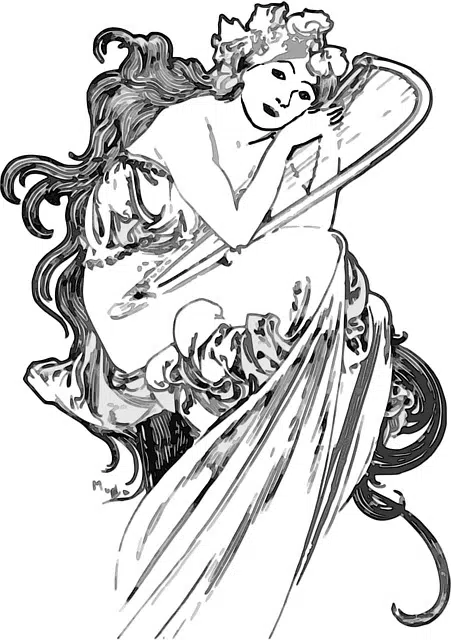
In Ancient Greece, the muses were divinities.
The muse is what inspires an artist . The notion comes from Greek mythology, where the muses were deities who lived in Parnassus or Helicon and protected the arts and sciences .
Although their genealogy varies depending on the source, it is usually considered that the muses were daughters of Zeus and Mnemosyne , born at the foot of Mount Olympus , in Pieria . The number of muses is also not precise, although there are nine canonical muses.
The muses in Ancient Greece
Specifically, in Ancient Greece the nine canonical muses were considered to be the following:
Clio , muse of history.
Euterpe , muse of music.
Polyhymnia , muse of sacred songs.
Terpsichore , muse of dance and choral poetry.
Calliope , muse of beauty.
Erato , muse of the amatory song.
Melpómene , muse of tragedy.
Talía , muse of comedy.
Urania , muse of astronomy.
However, one more figure should be added to all of them. We are referring to Sappho of Lesbos , who was considered by the Greek philosopher Plato as the tenth muse. We can say that Sappho was a poet who achieved an important role in the literature of the time thanks to her poems with love content.

A muse is called someone or something that inspires an artist.
The concept in poetry
It must also be emphasized that there is the expression "student of the muses" that is used to refer to poets.
Ancient poets believed that the muses presented them with events that they would later recount in their poems . That is why they did not hesitate to invoke the muses, since they considered that their power would inspire them in their literary works.
The muse as inspiration
Over time, people stopped believing in muses as divinities or beings with real existence (and, therefore, invocations became rare). In any case, the notion of muse still allows us to refer to those mysterious issues of inspiration that cannot be explained precisely.
A muse can be, on the other hand, a person, an object or a situation that incites artistic creation. A beautiful woman manages to become the muse of a poet without this assuming a divine or supernatural origin of the person in question. It is simply someone who awakens passions in the artist, who decides to capture these emotions through his creations. The muse, therefore, promotes artistic creation.
Salvador Dalí and Gala
There are many artists who throughout history have made it clear who their muses were. This would be the case of the painter Salvador Dalí who has been known, among other things, for having his own wife as his muse: Gala . Although this woman did not only serve as such for him, she was also the muse of other important figures of the 20th century such as André Breton or Louis Aragón .
Among the most significant works that the Catalan painter Dalí created, inspired by his wife, we can highlight the sculpture of "Gala leaning out of the window" or the painting "Gala naked looking at the sea."
